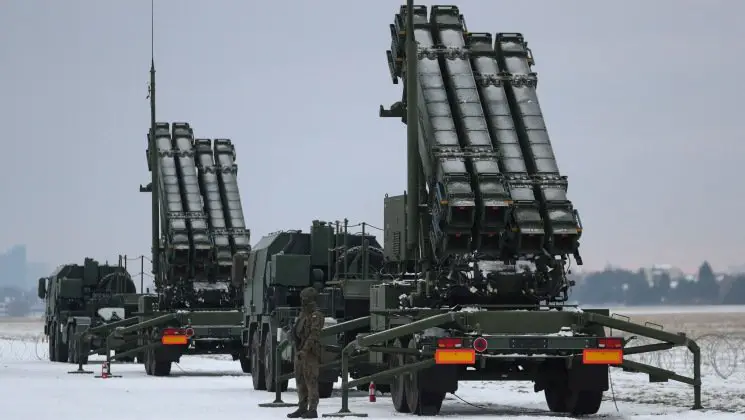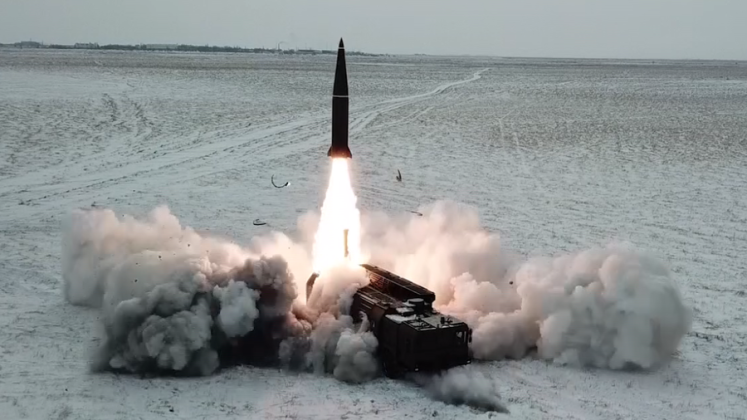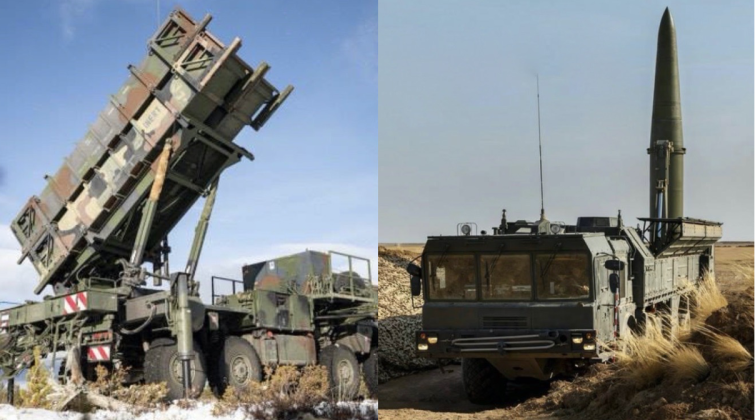A Ukrainian Patriot missile system operating near the Sergeevka locality in the disputed Donetsk region was on March 10 confirmed to have been largely destroyed in a Russian ballistic missile strike. The personnel operating the system, many of whom are reported to have been of foreign origin, were killed in the strike. The strikes which took place on March 9 also saw another of Ukraine’s most prized air defence assets, an S-300 system, destroyed, with both attacks launched using Iskander-M mobile short ranged ballistic missile systems. Although S-300s operated by Ukraine date back to the 1980s, their mobility still remains significantly higher than those of modern variants of the Patriot, while their vertical cold launch system for missiles allows them to fire from cover between buildings or in forests in ways Patriots cannot. Ukraine has received Patriot systems from three countries, with a first system supplied by Germany and the Netherlands jointly, and a second by the United States. The units destroyed in the recent strike were reportedly those delivered from German Air Force units.
While Russian government sources previously reported that an air launched derivative of the Iskander’s 9K720 ballistic missile, the Kh-47M2 Kinzhal, was used in May 2023 to neutralise Ukrainian Patriot missile systems in the capital Kiev, the attack was not verified by drone footage, with Western sources verifying only some damage to the assets. The Russian Defence Ministry also reported the successful targeting of a Patriot operated by the Ukrainian Armed Forces on February 23, destroying a surface to air missile launcher, ammunition, and various unspecified other components, although this too was not acknowledged by Western sources. The latest strike, however, was filmed from the air, and thus represented the first time absolute destruction of Patriot systems was acknowledged by Western sources. Although the Iskander-M was not designed for air defence suppression, and rather than homing in on radar emissions as other missiles like the Kh-31P do it uses inertial and satellite guidance, its high precision and ability to be retargeted during flight has made it an effective asset for neutralising even more mobile assets.
Commenting on the latest strikes, analysts writing for Forbes estimated that the strike neutralised up to 13 percent of all Patriot launchers delivered to Ukraine, and that as a result “the air over eastern Ukraine may have gotten a lot safer for the Russians.” A Russian drone operator’s “persistence and good fortune… paid off on Saturday, when they located a Ukrainian convoy including at least two truck-mounted quad-launchers for a Patriot surface-to-air missile battery,” the article highlighted regarding the incident. Similar assessments were made elsewhere in Western reporting, and have come as Western assessments of the prospects for Ukrainian military success have grown increasingly pessimistic.
Confirmed destruction of large parts of a Patriot system in a missile strike follows significant losses among Ukraine’s M1A1 Abrams tanks, which began to be confirmed just three days after the class was first deployed for combat with Russian forces in Eastern Ukraine. Both losses have represented significant blows to morale since there were previously very high hopes for them to turn the tide of the war against Russian forces. As Russian air power has been increasingly unrestricted in its operations over Ukraine, Western sources have widely reported on extreme ammunition shortages, increasingly severe personnel shortages due to the very high casualties Ukrainian forces suffered in 2023, and the increasingly devastating impact which Russian glide bombs have had on the frontlines.
The United States’ freeze on further arms supplies to Ukraine from late December has left little possibility of Ukraine replenishing either lost Patriot systems, or ammunition expended by remaining systems. The U.S. Military is itself facing serious shortages of Patriot systems, which was highlighted by the sudden increase in requirements for them from October 2023 following an escalation of attacks on American military facilities in the Middle East. U.S. forces have taken dozens of casualties on the ground to strikes by various non state actors with significant missile and rocket artillery capabilities in the region. Although Russian forces initially suffered from limited supplies of 9K720 missiles, a surge in production to several times pre-war rates has made them highly readily available allowing for new tactics to be utilised which involve the expenditure of more missiles during attacks. The Iskander-M and its very similar Soviet predecessor the OTR-23 Oka were designed specifically to neutralise targets heavily defended by systems such as the Patriot, and use unusual semi ballistic depressed trajectory with an apogee of 50,000 metres and the ability to make extensive in flight manoeuvres throughout their entire flights, which has made them difficult to even detect for many air defence systems and much harder to shoot down. The systems maintain high speeds of Mach 5.8 to Mach 8.7 in their terminal phases which contributes to their survivability.



